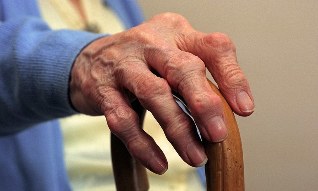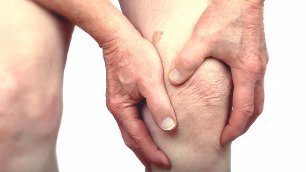Diseases of the musculoskeletal system are quite common among people, and this is not only a "payback" for upright walking, but also the consequences of heavy physical exertion, injuries and excess weight. It may seem to a non-specialist that all these diseases are very similar or, conversely, have nothing in common. For example, the difference between arthritis and arthrosis is clear only to a specialist.
MAIN DIFFERENCES
In the human body, there are movable joints of bones called joints. Their structure is fundamentally similar: the epiphyses, separated by the joint space, form a cavity covered with a membrane, inside which a synovial fluid similar to a gel is contained. These joints are simple, consisting of two surfaces, and also complex - 2-3 simple.
A wide range of conditions that cause inflammation in the joints, which can also affect the general health of a person, his muscle tissue and skin, are commonly called arthritis (a-t). There are more than 100 types of these pathologies, each of which has its own name, for example:
- degenerative changes - osteoarthritis;
- autoimmune disorders - rheumatoid a-t, gout, lupus and others.
All these diseases can limit the mobility of the skeleton, and also greatly reduce the quality of human life. Osteoarthritis or arthrosis (a-z) is one of the most common types of articular pathology, in which cartilage wear is noted. Slippery cartilaginous tissue provides mobility of the joints, but with age it becomes thinner and may disappear completely, which leads to pain on movement. This happens due to the fact that the bones begin to contact each other.
Most often, arthrosis affects the joints of the hands, hip or knee, but it may well be found in the ankle joint. As a person grows, his chances of developing this pathology increase, and with an injury, the risks double. Thus, the difference between arthritis and arthrosis is easy to define: the first is an inflammatory process, the second is a degenerative condition.

SYMPTOM DIFFERENCE
It is obvious that all types of inflammatory processes in the joints will differ from each other in specific symptoms. There is a certain standard set of signs that will help you understand that it is arthritis:
- tissue swelling and redness of the skin around the affected joint are visually visible;
- pain;
- restriction of movement.
Since arthrosis is not always accompanied by inflammation, it is more difficult to recognize their symptom complex, and special studies are often needed. Of course, here, too, there are the most common manifestations that help to carry out preliminary diagnostics:
- joint pain aggravated by movement;
- limitation of mobility and flexibility of joints.
The process of cartilage thinning makes the body compensate for the loss, so bone tissue grows, forming growths - osteophytes or spurs. These phenomena are visible on X-rays.
Arthritis has many causes and affects the affected areas in different ways, with inflammation affecting the surrounding soft tissues and skin, while arthrosis is wear of the joints that occurs locally.
It is obvious that degenerative changes may well be accompanied by inflammatory processes, and then mixed symptoms, characteristic of both pathologies, will appear. For example, painful sensations that increase with exertion, swelling and redness of the involved tissues, a crunch or squeaky sound in the joint. Inflammation, which tends to spread, involving the entire human body in the process, is what distinguishes arthritis from arthrosis of the knee joint.

RISK FACTORS
It is quite clear that both pathologies have both common and specific causes of development. Although, in general, science still could not understand the exact causes of arthrosis, it is generally accepted that this is one of the signs of aging in the body. However, some risk factors still highlight:
- Age is one of the fundamental reasons that increases the chances of getting joint pathology by about 10 times.
- Body mass. The more weight, the harder it is for the joints to work normally, therefore, their wear goes faster. There are even several types of arthritis that are common to overweight people.
- Gender. Oddly enough, but women are more prone to such diseases than men. In fairness, it should be said that there are specific types of arthritis, for example, gout, which are more common in a strong half of humanity.
- Deformations. This factor is inherent in arthrosis, because improper load distribution contributes to greater wear and damage to the articular cartilage.
- Injuries.
- Genetic predisposition. It should be noted that this item does not in any way increase the chances of getting inflammatory pathologies of the joints, except for autoimmune types, for example, rheumatoid arthritis.
- Type of activity. This refers to work or any other activity that requires a large systematic load on the joints.
All these factors, as a rule, act in combination. Scientists note that an active lifestyle, good nutrition and maintaining a normal weight will maximize the postponement of age-related degenerative changes in the joints.
PATHOMORPHOSIS OF NAMES
Historically, the names of diseases were formed from the mechanism of their origin. This approach helped the doctor understand the tactics of further actions, that is, choose the type of therapy, recommend the regimen. Medicine is developing, diagnostic methods are being improved and, as a result, new nosologies arise, and the essence of pathological processes is being revised, which naturally leads to a revision of the names of already known diseases.
and the essence of pathological processes is being revised, which naturally leads to a revision of the names of already known diseases.
Back in 1911, a group of diseases of a degenerative-dystrophic nature, for example, deformation arthrosis, was identified. Osteoarthritis and osteoarthritis, which differ only in names, are one pathology. The confusion occurs due to the fact that there was previously a misunderstanding of important specific features and etiopathogenetic mechanisms of the disease.
Osteoarthritis was usually understood as a chronic disease without the participation of an inflammatory process with an unknown cause, which is characterized by changes in the structure of the subchondral bone and degeneration of cartilage with or without synovitis. At present, this pathology is perceived not only as a process of dissimilation of cartilage tissue. This nosological form includes a group of diseases of various origins, but with similar morphological, biological and clinical manifestations, in which all articular components are affected. Often this set is joined by an inflammatory process.
Scientists believe that in the future it will not be necessary to look for the difference between arthritis and arthrosis in the fingers, since separate nosological forms will be distinguished, for example, polyosteoarthrosis of the interphalangeal joints.

TREATMENT METHODS
All types of joint diseases require treatment. After the diagnosis is made, the doctor will prescribe therapy, which may include several tactics, combined with each other or applied separately:
- Medicines. This includes a variety of pain relievers as well as oral anti-inflammatories. Injectable drugs such as hyaluronate, corticosteroids are injected directly into the articular cavity. This reduces inflammation and temporarily restores mobility. It should be remembered that such treatment has side effects and can be poorly tolerated, therefore it is used in courses.
- Physiotherapy and alternative medicine. The most common and safest therapies are for patients with any kind of arthritis. Here you can highlight such methods as acupuncture, physiotherapy exercises.
However, in some cases, when conservative treatment is ineffective, and patients experience severe pain, while the joints are deformed and the person is deprived of the ability to move normally, surgical treatment is indicated. Often large joints are replaced with endoprostheses when the changes in them are irreversible.
If the elements of the joint are completely intact, modern medicine offers endoscopic methods of surgical interventions, in which the doctor can remove the overgrown bone tissue, as well as the chipped sections of the cartilage.This type of surgery does not require long-term rehabilitation and is well tolerated by patients.
Thus, arthrosis is just one type of arthritis. Symptoms and instrumental studies will help to distinguish what specific pathology the patient is suffering from. Regardless of the nosological form, all joint diseases should be under the supervision of a doctor, this will help to avoid many serious consequences and maintain physical activity.

















































